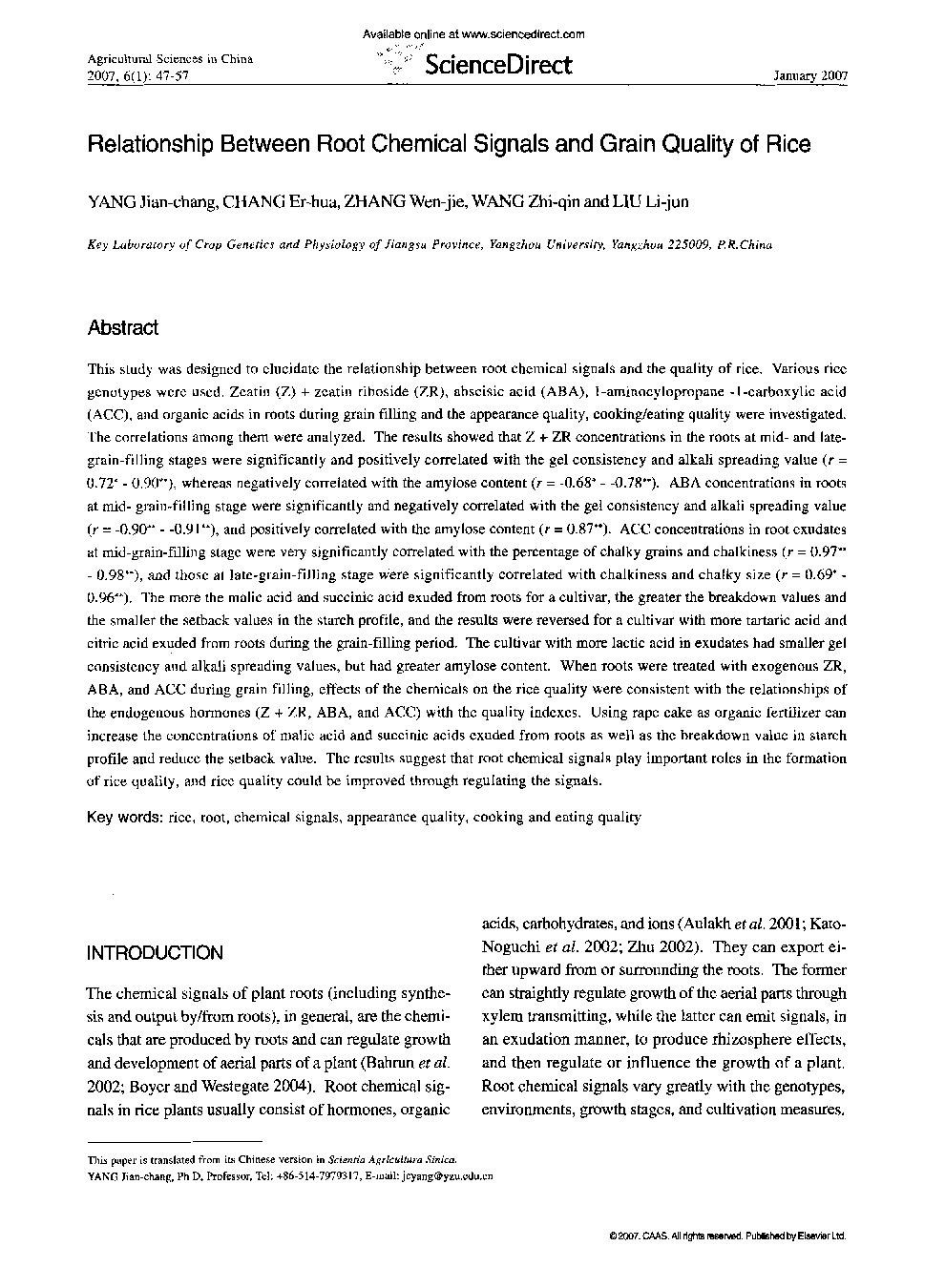| Article ID | Journal | Published Year | Pages | File Type |
|---|---|---|---|---|
| 4490934 | Agricultural Sciences in China | 2007 | 11 Pages |
This study was designed to elucidate the relationship between root chemical signals and the quality of rice. Various rice genotypes were used. Zeatin (Z) + zeatin riboside (ZR), abscisic acid (ABA), 1-aminocylopropane -1-carboxylic acid (ACC), and organic acids in roots during grain filling and the appearance quality, cooking/eating quality were investigated. The correlations among them were analyzed. The results showed that Z + ZR concentrations in the roots at mid- and late-grain-filling stages were significantly and positively correlated with the gel consistency and alkali spreading value (r = 0.72* – 0.90**), whereas negatively correlated with the amylose content (r = −0.68* – −0.78**). ABA concentrations in roots at mid-grain-filling stage were significantly and negatively correlated with the gel consistency and alkali spreading value (r = −0.90** – −0.91**), and positively correlated with the amylose content (r = 0.87**). ACC concentrations in root exudates at mid-grain-filling stage were very significantly correlated with the percentage of chalky grains and chalkiness (r = 0.97** − 0.98**), and those at late-grain-filling stage were significantly correlated with chalkiness and chalky size (r = 0.69* −0.96**). The more the malic acid and succinic acid exuded from roots for a cultivar, the greater the breakdown values and the smaller the setback values in the starch profile, and the results were reversed for a cultivar with more tartaric acid and citric acid exuded from roots during the grain-filling period. The cultivar with more lactic acid in exudates had smaller gel consistency and alkali spreading values, but had greater amylose content. When roots were treated with exogenous ZR, ABA, and ACC during grain filling, effects of the chemicals on the rice quality were consistent with the relationships of the endogenous hormones (Z + ZR, ABA, and ACC) with the quality indexes. Using rape cake as organic fertilizer can increase the concentrations of malic acid and succinic acids exuded from roots as well as the breakdown value in starch profile and reduce the setback value. The results suggest that root chemical signals play important roles in the formation of rice quality, and rice quality could be improved through regulating the signals.
